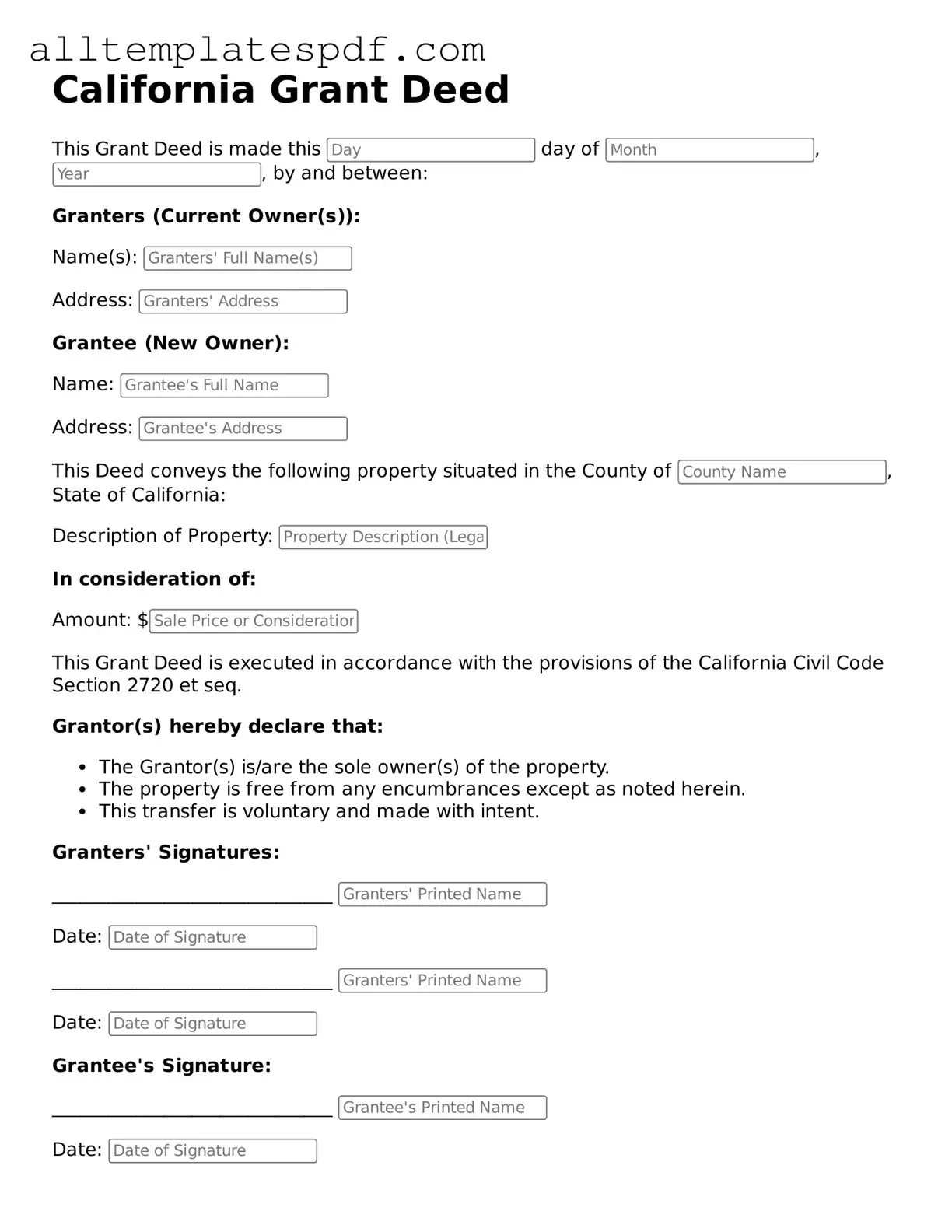Filling out a California Deed form can seem straightforward, but there are common mistakes that individuals often make. One frequent error is not including the correct legal description of the property. This description must be precise, detailing the boundaries and location. Omitting this information can lead to confusion and potential disputes in the future.
Another mistake is failing to provide the full names of all parties involved in the transaction. It is essential to ensure that the names match those on the official identification. Incomplete or incorrect names can cause issues with the transfer of ownership.
People often overlook the need for signatures. Both the grantor and the grantee must sign the deed. If one party forgets to sign, the document may be deemed invalid. Additionally, signatures must be notarized to ensure authenticity, which is another step that can be missed.
Many individuals also neglect to check the date of the transaction. The date should reflect when the deed is executed. An incorrect or missing date can complicate matters, especially if there are multiple transactions or disputes regarding ownership.
In some cases, individuals fail to indicate the type of deed being used. There are various types, such as grant deeds and quitclaim deeds, each serving different purposes. Choosing the wrong type can affect the rights and responsibilities of the parties involved.
Another common error is not recording the deed with the county recorder’s office. After filling out the form, it is crucial to submit it for recording. Failure to do so can result in the deed not being recognized, leaving the ownership status in question.
People sometimes forget to include the appropriate transfer tax information. California requires a transfer tax to be paid when a property changes hands. Not addressing this requirement can lead to penalties or delays in processing the deed.
Lastly, individuals may not retain copies of the completed deed. Keeping a copy is important for personal records and may be necessary for future reference or legal matters. Without a copy, proving ownership or resolving disputes can become challenging.
